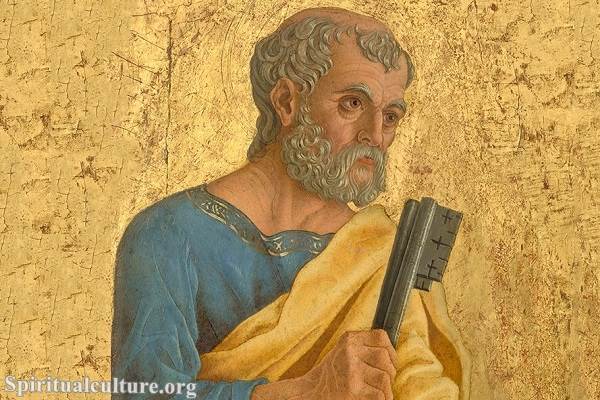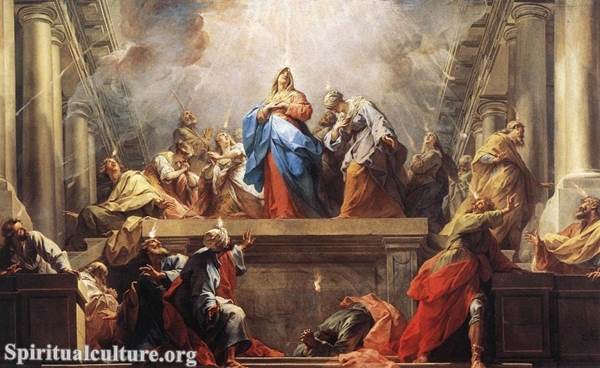Illness has a way of stripping life to its essentials. In the stillness of hospital rooms, in whispered prayers during suffering, in the ache of human vulnerability — we are drawn toward mysteries deeper than science can explain. For Catholics, the Anointing of the Sick is more than a ritual or comfort. It is a sacrament, a sacred moment where human weakness meets divine mercy, and the presence of Christ becomes palpably near.
In this article, Spiritual Culture invites you into the heart of this often-misunderstood sacrament. We will explore its scriptural roots, theological meaning, and spiritual purpose — and reflect on what it reveals about God, suffering, and our ultimate healing.
The Biblical Foundation of Anointing
The Roots in Scripture
The Anointing of the Sick finds its foundation in James 5:14–15:
“Is any among you sick? Let him call for the elders of the church, and let them pray over him, anointing him with oil in the name of the Lord; and the prayer of faith will save the sick man, and the Lord will raise him up; and if he has committed sins, he will be forgiven.” (RSV)
This passage is not merely descriptive — it is prescriptive. It shows that from the earliest Christian communities, the Church recognized the importance of tending to the ill not just physically, but spiritually, through prayer and sacred anointing.
Christ the Healer
Jesus’ public ministry was filled with acts of healing. He healed the blind, cleansed lepers, restored the paralyzed — not only out of compassion but as signs of the Kingdom breaking into the world. His miracles pointed beyond physical restoration to a deeper truth: that He came to heal the whole person — body, soul, and spirit.
In healing the sick, Jesus often forgave their sins (cf. Mark 2:5–12), showing the inseparable link between healing and reconciliation.
What Is the Anointing of the Sick?
A Sacrament of Healing
The Catholic Church teaches that Anointing of the Sick is one of the seven sacraments, specifically a sacrament of healing, alongside the Sacrament of Reconciliation. It is not merely symbolic, but an actual channel of grace — instituted by Christ, entrusted to the Church, and effective by the working of the Holy Spirit.
Who Can Receive It?
Contrary to common misconception, this sacrament is not only for those who are dying. According to the Catechism of the Catholic Church (CCC 1514–1515):
“The Anointing of the Sick is not a sacrament for those only who are at the point of death… as soon as anyone of the faithful begins to be in danger of death from sickness or old age, the fitting time… has certainly already arrived.”
It may be repeated when the illness worsens or when a new serious condition arises.
The Theological Meaning of Anointing
Participation in Christ’s Passion
Suffering is not meaningless in Christian theology. In fact, it is mysteriously redemptive when united to the Cross of Christ. The sacrament invites the sick person to join their suffering with the sufferings of Christ, not as passive victims but as co-redeemers in love.
St. Paul writes:
“Now I rejoice in my sufferings for your sake, and in my flesh I complete what is lacking in Christ’s afflictions for the sake of his body, the church.” (Colossians 1:24)
This does not mean Christ’s work was insufficient, but rather that believers are invited into the mystery of redemptive suffering — bearing spiritual fruit through union with Him.
A Sign of the Kingdom to Come
The Anointing of the Sick points forward to the resurrection of the body and the healing of all creation. It reminds us that every earthly healing is a foretaste of the full restoration we await in Christ.
In a world where suffering often leads to despair, the sacrament proclaims a hope that transcends death: the promise of eternal life and the healing of every wound in God’s time.
The Rite Itself: Oil, Prayer, and Presence
Sacred Oil and Its Symbolism
The priest uses Oil of the Sick, blessed by the bishop during Holy Week. Oil in Scripture symbolizes healing, strength, and consecration — from kings and prophets to the Good Samaritan who tended wounds with oil and wine.
In this sacrament, oil becomes a tangible sign of God’s healing touch, applied gently on the forehead and hands with the words:
“Through this holy anointing may the Lord in his love and mercy help you with the grace of the Holy Spirit. May the Lord who frees you from sin save you and raise you up.”
The Communal Aspect
Although often administered privately, the sacrament is deeply communal. It represents the Church surrounding her sick members in love, prayer, and sacramental grace. It may be celebrated in hospitals, homes, or even communal services with multiple sick individuals.
Wherever it occurs, the whole Church prays — through the priest and with the family — lifting up the sick person before the healing heart of Christ.
Healing Beyond the Physical
Not Always Physical Cure
While miraculous healings do occur, the sacrament does not guarantee physical recovery. Instead, it promises something deeper: spiritual strength, peace, courage, and the forgiveness of sins (cf. CCC 1520–1523).
Many have testified to a profound inner calm, a release of fear, a return of trust in God, and even reconciliation with estranged family members — all fruit of this sacred encounter.
Preparing for the Final Journey
When given near the end of life, the Anointing is accompanied by the Apostolic Pardon (if a priest is present) and Viaticum — the Eucharist as food for the journey to eternal life.
In this way, the sacrament becomes a bridge between time and eternity, a final seal of grace that prepares the soul to meet God face-to-face.
The Church’s Teaching in Summary
According to the Catechism of the Catholic Church, the effects of the Anointing of the Sick are:
- Union with the passion of Christ
- Strength, peace, and courage to endure
- Forgiveness of sins (if confession is not possible)
- Possible restoration of health
- Preparation for passing over to eternal life
This is not a peripheral ritual. It is a central act of divine compassion, where the Church brings Christ Himself to the bedside of the suffering.
Healing, Suffering, and Love: A Deeper Reflection
Why Suffering?
The Anointing of the Sick doesn’t answer all the mysteries of pain. But it places that pain in a sacred context — as something that can be filled with grace, transformed into offering, and endured with hope.
As Spiritual Culture, we affirm that suffering is never God’s punishment — but in Christ, it becomes a place of encounter, purification, and love.
The Church does not abandon her sick. She comes bearing oil, prayer, and Presence. She anoints not only the body but the soul, whispering to every wounded heart: You are not alone. Christ is with you.
Reflect and Reimagine
The Catholic sacrament of the Anointing of the Sick is a profound invitation to see illness not as the end — but as a threshold. A threshold to grace, to union with Christ, to the Church’s love made visible, and to the hope of resurrection.
If you or a loved one is facing illness or the weight of age, know this: the Church carries Christ to you. Not as an idea, but as a healing Presence. Not to erase suffering, but to fill it with meaning.
May we learn to see the sick not as burdens, but as living icons of Christ crucified and risen — and may this sacrament remind us that in every valley of shadow, we are never forsaken.
Let oil flow where wounds are raw. Let prayer rise where fear trembles. And let Christ, the Divine Physician, be known again… through love that anoints.



